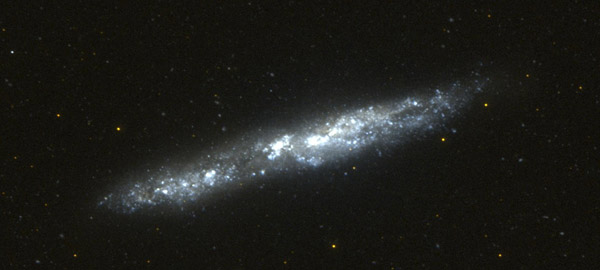

Hubble’s ultraviolet vision opened a new window on the evolving universe, tracking the birth of stars over the last 11 billion years back to the cosmos’ busiest star-forming period about 3 billion years after the big bang.

The field features approximately 15,000 galaxies, about 12,000 of which are forming stars. This image is a portion of the GOODS-North field.

Later Hubble results identified how early in the universe dark energy began to influence the expansion as well as constrained the current expansion rate. The 42 supernovas found by Hubble not only solidified the conclusions about dark energy, but also began to constrain some of its possible explanations. Hubble continued to explore the nature of dark energy with observations such as the Great Observatories Origins Deep Survey (GOODS), structured to help uncover distant supernovas. This shift between two different eras of the universe - a change from a decelerating universe to an accelerating universe - showed that dark energy exists. While ground-based studies had measured this accelerating period, Hubble’s observation of 1997ff stretched back to the decelerating part of the expansion. The discovery of supernova 1997ff, located about 10 billion light-years away, provided evidence for dark energy.Ībout halfway into the universe’s history - several billion years ago - dark energy became dominant and the expansion accelerated. However, only Hubble had the resolution to extend these observations to very distant galaxies. The cosmological redshifts of galaxies at different distances provides a history of the expansion of the universe over time. Meanwhile, as the universe expands, the light traveling to Earth from distant galaxies (and their supernovas) is stretched out to longer wavelengths - a phenomenon called cosmological redshift. Credit: NASA, Adam Riess (STScI) News Release: 2001-09 >Ī galaxy located a billion light-years away provides a data point for the universe as it was a billion years ago. The supernova itself (right) is distinguished by the white dot in the center. In a close-up view of that region (left) a white arrow points to a faint elliptical, the home of the exploding SN 1997ff. Within the Hubble Deep Field-North region, astronomers pinpointed a blaze of light from one of the farthest supernovas ever seen.

Both Hubble and ground-based observations measures a special type of stellar explosion, a white dwarf supernova, to measure accurate distances to galaxies. Hubble plays an important role in verifying, characterizing and constraining dark energy. Something had to be powering this accelerating universe and, in part due to its unknown nature, this “something” was called dark energy. Instead, the expansion speed was increasing. In the late 1990s, astronomers found evidence that the expansion of the universe was not slowing down due to gravity as expected. The greater the redshift, the greater the distance the light has traveled. What Is Dark Energy? The universe is expanding, and that expansion stretches light traveling through space in a phenomenon known as cosmological redshift.


 0 kommentar(er)
0 kommentar(er)
